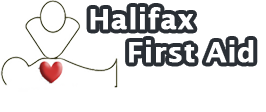First aid refers to immediate care given to someone who has been injured or suffered sudden illness. It does not necessarily require advanced emergency medical treatment. Home care rendered while waiting for medical assistance to arrive is considered first aid. Actions taken to assist right after an accident or an emergency are likewise considered as first aid actions. Furthermore, giving reassurance, showing willingness to help, and promoting confidence by showing competence are also first aid.
Providing appropriate and timely first aid treatment can do so much in improving the outcome of victims of injuries or medical emergencies. In fact, these actions can mean the person’s life or death.
The main goals of first aid are to preserve or sustain life, prevent further harm, and promote uneventful healing and recovery. Providing artificial ventilation through mouth-to-mouth respiration preserves a person’s life, especially in situations where breathing has stopped. Immobilizing broken bones, bandaging, and applying direct pressure to bleeding, help prevent further problems or complications. First aid measures such as providing pain relief, giving reassurance, keeping the victim warm, and arranging transfer to a medical facility helps ensure a good outcome and quick recovery. However, in order for these goals to be realized, you should provide proper first aid. Take note that providing inappropriate care can only worsen the victim’s condition. For instance, inappropriately moving a spinal cord injury patient can lead to more problems.
This is one reason why the need for first aid training is crucial these days. Now more than ever, every community needs to have someone trained at providing first aid. The population throughout the world has dramatically increased. In the similar way, the risk of injuries and accidents are also ever increasing. People are exposed to a wide variety of hazards while inside the house, the workplace, at school, on roads, and even in public places. As the risks increase, there is also an ever growing demand for first aid trained people. Over the past few years, many industries and job positions have required completing a first aid course. For example, people whose occupation regularly deals with children are required to have first aid certification. The same is true for those who are in large factories with high risk for accidents.
In general, first aid is aimed to ensure the safety of others and that of self, and prepares laypeople to act in times of disasters and emergency situations. The more people trained in first aid, the more prepared a community becomes in managing unexpected events. First aid training is highly encouraged for all people considering the unpredictability of nature and the myriad of hazards that beset communities. It is not uncommon to hear of news about emergencies and injuries here and there, so it is best to be prepared at all times.
